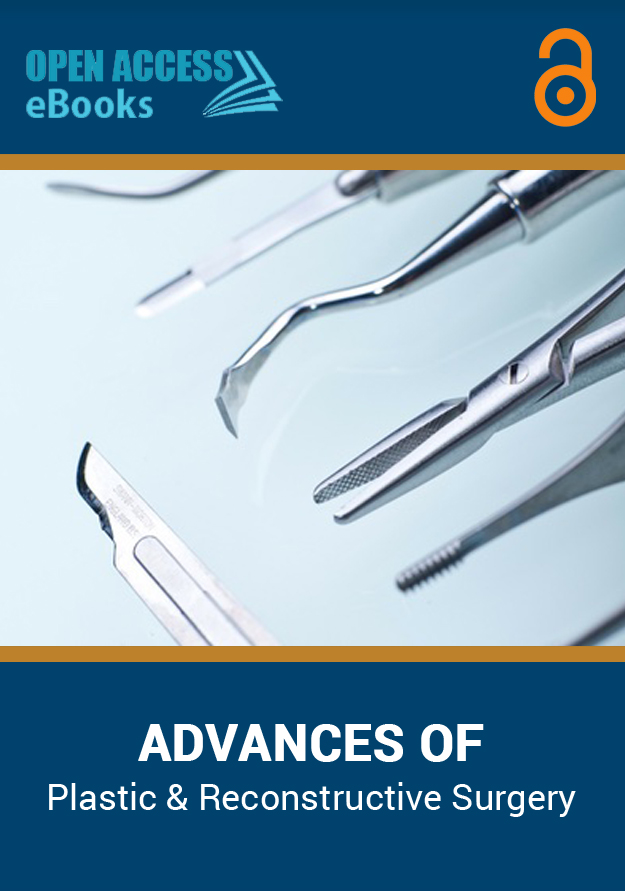List of Chapters
Cleft lip nasal deformity: Analysis and treatment
Author(s): Martínez-Capoccioni Gabriel*; Martín-Martín Carlos
Cleft lip and palate (CLP) are the most frequent congenital craniofacial defects and are usually associated with craniofacial defects and nose deformities that alter the facial aesthetic configuration. The aetiology of CLP is thought to bemultifactorial (genetic, teratogenic and/or environmental factors), 3 although there are no studies which have determined the exact causes that produce it. This chapter describes the nasal deformities associated with congenital clefting and outlines the timing and techniques used to correct these deformities.
Options in Breast Reconstruction and Plastic Surgery in Regard to Surgeon Perceptions and Patient Acceptance in Saudi Arabia
Author(s): Bassam Ahmed ALmutlaq - MBBS, Mohammad Al-Qattan - PhD, Raed Dawood Almansour - MBBS, Awad Nafel Al Harbi - MBBS, Ali Dawood Almansour, Omar Abdullah AL-Noqaidan - MBBS, Abdul Rahman Ali Al-Sogair, Abdullah Abdulaziz Bin Jariyd - MBBS, Hussain Gadelkarim Ahmed - Phd
In this review article, various preferences in breast plastic surgery particularly after breast cancer will be discussed in view of the diverse indications for the different construction procedures.The various conditions that necessitate the need for reconstruction are appraised, the important reconstructive procedures are discussed. The most important indications procedures discussed in this review include; Prophylactic subcutaneous mastectomy, Lumpectomy and Radiation, Modified Mastectomy with Axillary Sampling, Nipple reconstruction, and the contralateral breast. These procedures are discussed in view of plastic surgeon practice and patients acceptability in Saudi Arabia. Data from Saudi Arabia in particular was identified through searches of the EMBASE, and MEDLINE database, using the keywords: Saudi Arabia, breast plastic Surgery, breast reconstruction, autologous breast reconstruction, breast augmentation.
The Versatile Role of Fat Grafting in Restoring Harmony and Symmetry in Facial Plastic & Orthognathic Surgery
Author(s): Frank Chun-Shin; Chang MD; Lee Seng; Khoo MD*
Facial rejuvenation surgery has evolved from simple excision and tightening to soft tissue repositioning and augmentation. It is important to keep in mind that the face per se is composed of both soft tissues and bony skeleton. Nonetheless, there has been a paucity of approaches that simultaneously address the bony or hard tissue aspects in addition to the soft tissues. A "pan-facial" approach to facial surgery encompassing both the bony and soft tissue components will therefore yield the most favourable outcomes.
Desmoplastic Melanoma: A Review of Current Management
Author(s): SM Bollard; MA Wilson; N Mulligan; A Fabre; A McCann; FJ Moloney; SM Potter*
Desmoplastic Melanoma (DM) is a rare variant of melanoma accounting for less than 5% of melanoma diagnoses. It is more common in males, affects older patients and occurs in sun-exposed areas.It remains a challenging diagnosis due to its often benign clinical appearance. Histologically, there are two distinct subtypes described as pure and mixed, and it is often associated with perineural invasion.
Pressure Injuries Fundamentals
Author(s): Dr Mohammed Rahmatulla MBChB, MSc(BPRS), MSc (Med Ed)*; Dr Nawras Farhan MBChB, MSc(BPRS)
A pressure injury (PI) is "a localized damage to the skin and/or underlying soft tissue usually over a bony prominence or related to a medical or other device. The injury can present as intact skin or an open ulcer and may be painful. The injury occurs as a result of intense and/or prolonged pressure or pressure in combination with shear.
The Keystone Perforator Island Flap: A 'Workhorse' Reconstructive Tool
Author(s): Dr Mohammed Rahmaullah MBChB, MSc(BPRS), MSc (Med Ed)*; Dr Nawras Farhan MBChB, MSc (BPRS)
The Keystone Perforator Island Flap is a versatile local flap for wound
reconstruction that has emerged in the last 10-15 years. This review paper
is dedicated to evaluating the concept of this reconstructive approach along
with gathering its surgical applications and also to provide a comprehensive
summary of the current modifications of this flap as well as the challenges faced
in order to extend the applicability of this technique in clinical practice.
